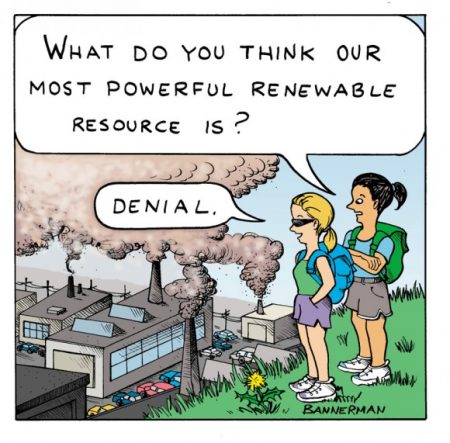November 14, 2016 – Donald Trump should cover his ears because I am about to relate observed science about the current state of the world’s climate. Before I do however I want to point out what we are describing here is observation, that is, the gathering of data from weather stations around the globe, from sensors embedded in polar ice, and from satellite sensors doing remote scanning.
Observation is one of the three pillars of climate science. The other two are theory and modeling. Nothing that I describe here can be described as theory or as simulated through climate models.
So here goes.
According to the World Meteorological Organization (WMO), that band of prevaricating scientists this year have observed mean temperatures 1.2 Celsius (2.16 Fahrenheit) degrees above pre-Industrial levels (1880). This marks the third observed year in a row and the 16th of the century with global mean temperature rise.
Trending (theory combined with modeling) points to accelerating warming.
El Nino in early 2016, states scientists, was a contributing factor to the rise. But with El Nino dissipated temperatures continue to reach new mean highs.
Michael Mann, a climate scientist working at Penn State University stated, “It is almost as if mother nature is making a statement….Just as one of the planet’s two largest emitters of carbon has elected a climate change denier [Donald Trump] – who has threatened to pull out of the Paris accord – to the highest office, she reminds us that she has the final word.”
With a little over a month-and-a-half to go in the year the WMO sees no trending to suggest 2016 won’t be the warmest year in modern recorded history.
Some observed highlights for the year:
- Pretoria, South Africa set a new record of 42.7 Celsius (108.86 Fahrenheit) in January.
- Mae Hong Son, Thailand hit 44.6 Celsius (112.28 Fahrenheit) on April 28.
- Phalodi, India hit a high of 51 Celsius (123.8 Fahrenheit) in May.
- Mitribah, Kuwait reached a temperature of 54 Celsius (129.2 Fahrenheit) in July.
- Siberian Arctic temperatures were 6 to 7 Celsius (10.8 to 12.6 Fahrenheit) above average.
- Arctic sea ice shrank to its second lowest amount ever recorded in September.
- Australia’s Great Barrier Reef witnessed 50% coral mortality.
- Carbon dioxide levels at Mauna Loa reached 407.7 parts per mission in May.
The mean increase in temperatures and all of these recorded observations happened while the nations of the world were, for the third year, keeping carbon emission levels virtually flat. Increases in 2016 have been 0.2% above 2015 levels. This is significantly smaller by a factor of 10 from emissions three years ago which were growing globally by 2.3% per year.
Why are we seeing the flattening of the emissions curve?
Largely because the leadership in the United States and China, the two largest emitters, committed to lowering coal use. Trump wants to reverse the U.S. move away from coal which makes you wonder if all of this success will go for naught.
On the emission front India in 2015 saw a rise of 5.2%, largely attributed to bringing a number of coal-fired power plants on stream. The European Union after several years of decline rose 1.4%. The move by Germany to close nuclear power plants and keep coal plants still burning is believed to be a contributing factor in the EU. But China’s coal consumption declined with carbon emissions falling 0.7%. This year China is expected to see emissions drop a further 0.5%. In the U.S. with the cutback of coal-fired power and its replacement with natural gas and renewable energy, emissions fell by 2.6% in 2015 and are forecasted to fall 1.7% by year end.
This is progress in tackling carbon pollution but the elephant in the room remains. Humans in 2016 will emit 36 billion tons of carbon dioxide. Methane, nitrogen oxide, and other greenhouse gases are not part of this calculation. If we continue at this pace, 22 years from now we will have altered the atmosphere sufficiently to exceed the 2 Celsius (3.6 Fahrenheit) warming target set at COP21 in Paris. I know these observed “facts” may appear to be hoaxes to the future Trump White House, but having spent time in Washington, DC, in past summers I cannot imagine what the American capital will experience a scant 22 years from now. If you could fry eggs on the sidewalk back in the early 1980s when I worked there, I can imagine you’ll be able to add the bacon.
Mother nature may yet throw a further monkey wrench into emission reduction efforts. The El Nino that contributed to the U.S. Southwest and California drought and weird weather in other parts of the world will probably have contributed to significant vegetation die off in forested and grassland areas around the planet. With this decline we lose some of our natural carbon sink while at the same time we end up releasing more carbon into the atmosphere from dead and decaying trees and plants. Modeling predicts latency in emissions before we should experience a spike in 2017.
States Glen Peters, research scientist at the Center for International Climate and Environmental Research, Oslo, Norway, “leveling out like we have over the last three years is a big surprise.” But he goes on to say we need to “give it five or more years before I’d say it’s a peak.” Never forget that emissions remain 63% above those created by us in 1990.














This confirms my opinion, that diabolization of nuclear power is wrong. Here in Germany we have invested Billions in solar and wind, but with zero positive impact on carbon emission. Energy storage problem is still unsolved and capacity of wind and solar is still relatively poor and extremely volatile.
Germany’s abandonment of nuclear power in light of Fukushima was a political and not an intellectual decision. The fear of a nuclear accident similar to the one that struck Japan at existing German nuclear power plants is infinitely small.
As for energy storage, the capacity build up has yet to match the build out of renewable capacity. That is the single biggest mistake in the strategy to date. The two need to be in lock step together for renewable energy to become the reliable continuous grid delivery system that matches coal and natural gas thermal plants.
Yes agree. A lock step step together ist ideal solution for most countries. A few with the right topography like Austria and Swizzerland can also settle on hydrodynamic power. E.g. Austria is in the lucky position to produce almost 80% electricity from 100 year old artificial lakes. Nowadays those lakes would have no chance anymore because of environmental protection reasons.
Could you please explain what you mean by solar and wind being “extremely volatile?” Did you actually mean variable and unreliable for continuous feed to energy grids?
https://uploads.disquscdn.com/images/90ee3ff51540589312d1d840757eed1d4e3faf2b2e89f8b2b766b4e5df99d2e6.jpg
Trying to ‘store’ excess wind and solar, by enhancing the cables between small european countries, is also a bad idea… When the wind dies down, it often is over a larger area than several countries.